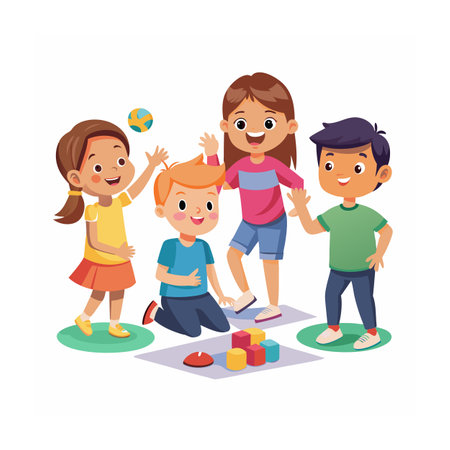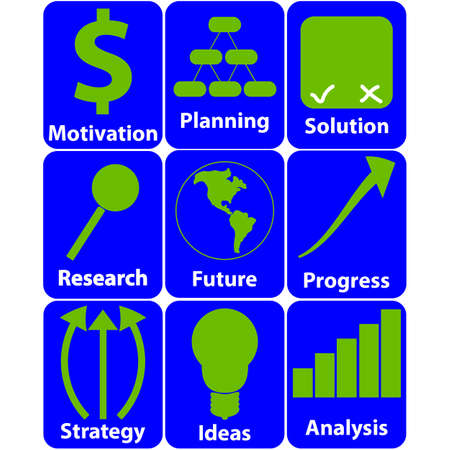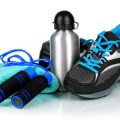Introduction to Personal Hygiene in Occupational Therapy
Personal hygiene is a vital part of everyone’s daily life. In occupational therapy, teaching personal hygiene is more than just instructing someone how to wash their hands or brush their teeth. It’s about empowering both children and adults with the skills they need to care for themselves confidently and independently. Good personal hygiene plays a key role in keeping our bodies healthy and preventing the spread of illness, but it also has a big impact on our mental and emotional well-being.
Why Is Personal Hygiene Important?
Personal hygiene includes activities like bathing, brushing teeth, washing hands, and grooming. These habits help prevent infections, skin problems, and other health issues. For children, learning these skills early builds the foundation for lifelong health and self-esteem. For adults—especially those recovering from injury or managing disabilities—regaining or improving hygiene skills can lead to greater independence and dignity.
The Impact of Personal Hygiene on Health
| Aspect | Physical Health | Mental Health |
|---|---|---|
| Children | Reduces risk of illnesses (like colds, flu, and skin infections) | Boosts confidence, helps with social acceptance at school |
| Adults | Prevents disease, supports recovery after injury or illness | Improves self-image, reduces stress and anxiety |
Key Takeaways for Occupational Therapy Practice
In occupational therapy sessions, teaching personal hygiene isn’t just about following a routine—it’s about understanding each person’s unique needs and abilities. Therapists adapt strategies so that children feel excited to learn new habits and adults feel encouraged as they regain control over their own care. By focusing on personal hygiene as an essential activity of daily living (ADL), therapists support overall health and quality of life for people of all ages.
2. Understanding Developmental and Cultural Considerations
When teaching personal hygiene in occupational therapy, it’s important to recognize that age, developmental stage, and cultural background all play a big role in how people learn and practice these habits. In the United States, personal hygiene is often linked to health, independence, and social acceptance. However, approaches to teaching these skills should be tailored for both children and adults, considering their unique needs and cultural perspectives.
Age and Developmental Stages
Children and adults learn personal hygiene skills differently. Children may need step-by-step instruction with visual aids or hands-on demonstrations, while adults might benefit from discussions about routines or written checklists. People with developmental delays or disabilities may require additional support, such as adaptive equipment or repetition.
| Group | Teaching Approach | Common Challenges | Helpful Strategies |
|---|---|---|---|
| Young Children (Ages 3-7) | Use songs, pictures, routines | Short attention span Lack of coordination |
Visual schedules Reward systems Parental involvement |
| Older Children & Teens (Ages 8-17) | Peer modeling Social stories Role-playing |
Sensitivity about body changes Peer pressure |
Open discussion Privacy respect Encourage independence |
| Adults | Goal setting Cultural respect Problem-solving sessions |
Lack of motivation Cultural differences Mental health factors |
Collaborative planning Respect for preferences Incorporate daily routines |
| Seniors/Elderly | Simplified steps Adaptive tools Paced instruction |
Cognitive decline Physical limitations |
Labeled items Sensory-friendly products Caregiver education |
Cultural Norms in American Society
The American approach to personal hygiene is shaped by values like autonomy, privacy, and social norms. For instance, daily bathing, use of deodorant, and oral care are common expectations. However, America is diverse—people may have different customs based on their family traditions or country of origin. Occupational therapists should ask respectful questions about preferences and be aware of practices such as:
- Bathing frequency (some cultures may bathe less or more often)
- Differing attitudes toward products like deodorant or perfumes
- Cultural modesty affecting willingness to discuss or practice hygiene tasks with others present
- Dietary influences on oral care routines (e.g., sugar intake)
- Sensitivity to certain cleaning products due to religious beliefs or allergies
Tips for Culturally Responsive Teaching in OT Settings:
- Avoid assumptions: Ask clients about their hygiene habits and preferences.
- Include families: Involve family members when teaching children from cultures where group care is valued.
- Respect privacy: Offer same-gender therapists if requested.
- Select familiar products: Use soaps or dental products that fit the client’s culture when possible.
- Culturally relevant education: Explain the “why” behind certain American hygiene practices without judgment.
The Bottom Line on Diversity in Hygiene Education:
No two people are the same. By understanding age-related needs and honoring cultural differences, occupational therapists can create effective, respectful strategies for teaching personal hygiene to everyone they serve.

3. Evidence-Based Strategies for Teaching Hygiene Skills
When teaching personal hygiene skills to both adults and children in occupational therapy, using evidence-based strategies ensures that each client receives support tailored to their individual needs. In the United States, therapists commonly use a variety of approaches to make learning hygiene routines easier, more effective, and culturally relevant. Below are some proven strategies that can be adapted for clients of all ages and abilities.
Visual Schedules
Visual schedules are step-by-step guides with pictures or symbols that outline each part of a hygiene routine. These tools help clients understand what comes next and build independence, especially for those who benefit from visual learning. For example, a morning routine chart might show brushing teeth, washing face, combing hair, and putting on deodorant.
Sample Visual Schedule Table
| Step | Picture/Symbol | Description |
|---|---|---|
| 1 |  |
Brush Teeth |
| 2 |  |
Wash Hands and Face |
| 3 |  |
Comb Hair |
| 4 |  |
Put on Deodorant |
Modeling and Demonstration
Modeling means the therapist or caregiver demonstrates how to complete a hygiene task while the client observes. This can include actions like showing how to wash hands properly or how to floss teeth. After watching, clients are encouraged to imitate the steps themselves. This approach is especially helpful in American culture where “learning by doing” is valued.
Hands-On Practice
Clients learn best when they have the chance to practice tasks in real-life settings. Therapists guide them through activities such as showering, washing hair, or using deodorant. The goal is to build confidence and muscle memory through repetition and positive feedback.
Social Stories and Narratives
Social stories use simple language and illustrations to explain social norms around hygiene. These stories help children—and sometimes adults—understand why hygiene matters and what is expected in American schools, workplaces, or social settings. For example, a social story might explain why it’s important to wash hands before eating lunch at school or after using the restroom.
Technological Tools
Technology offers new ways to teach hygiene skills. Apps, reminder alarms, instructional videos, and interactive games can motivate clients to remember daily routines. Many families in the U.S. find that setting reminders on smartphones or using educational apps makes it easier for both kids and adults to stick with their hygiene habits.
Comparison of Evidence-Based Strategies
| Strategy | Main Benefit | Best For… | Cultural Considerations (U.S.) |
|---|---|---|---|
| Visual Schedules | Makes routines predictable and clear | Younger children, visual learners, individuals with autism or ADHD | Use familiar images/icons; customize for home/school life |
| Modeling & Demonstration | Shows exactly how tasks are done step-by-step | All ages; those who need direct instruction or repetition | Suits American preference for active learning and participation |
| Hands-On Practice | Builds skill through real experience and feedback | Ages 5+, teens, adults; anyone needing skill mastery | Encourages independence valued in U.S. culture |
| Social Stories/Narratives | Makes abstract concepts concrete; explains social rules around hygiene | Younger children; individuals with developmental disabilities | Tailor stories to typical U.S. settings (school, work) |
| Technological Tools | Makes routines fun; provides reminders | Youths comfortable with technology; busy adults | Taps into widespread smartphone/tablet use in U.S. |
Selecting the Right Strategy for Each Client
The most effective approach is often a combination of these strategies based on each persons age, learning style, cultural background, and unique challenges. Occupational therapists work closely with families to create customized plans that support lasting independence in personal hygiene skills.
4. Adapting Strategies for Home, School, and Community Settings
Understanding Different Environments
Teaching personal hygiene in occupational therapy requires adapting strategies to fit the unique routines and resources found in American homes, schools, and community settings. Each environment presents different opportunities and challenges, so it is important to individualize approaches based on where learning takes place.
Practical Tips for Home Settings
- Create Visual Schedules: Use simple picture charts or checklists in bathrooms and bedrooms to remind individuals of daily hygiene steps like tooth brushing or hand washing.
- Modify the Environment: Install adaptive equipment such as grab bars, non-slip mats, or step stools to make self-care tasks easier for people with physical limitations.
- Family Involvement: Encourage family members to model good hygiene habits and provide consistent reminders and praise.
Strategies for School Settings
- Collaborate with Teachers: Work with teachers to build hygiene routines into the school day, such as after recess or before lunch.
- Peer Modeling: Encourage students to learn from classmates who demonstrate proper handwashing or grooming techniques.
- Sensory-Friendly Solutions: Provide alternatives for students sensitive to certain textures or smells, like unscented soap or soft towels.
Sample Hygiene Routine for Schools
| Time | Hygiene Activity | Cue/Support |
|---|---|---|
| Before Lunch | Hand Washing | Pictorial signs above sinks |
| After PE/Recess | Sweat Wipe & Water Break | Verbal reminder from teacher |
| End of Day | Packing Up Personal Items | Checklist on locker/cubby |
Community Setting Adaptations
- Practice in Real-Life Situations: Visit public restrooms, gyms, or pools as part of therapy to practice skills in authentic environments found throughout the US.
- Cultural Sensitivity: Respect diverse backgrounds by discussing various American customs around hygiene and privacy in community spaces.
- Avoiding Barriers: Teach how to locate accessible facilities and advocate for needed support when out in public.
Caregiver and Teacher Collaboration Strategies
- Consistent Communication: Set up a communication log (paper notebook or digital app) between home and school for updates about hygiene progress and challenges.
- Joint Goal Setting: Hold regular meetings (in-person or virtual) with parents, teachers, and therapists to align goals and share strategies that work best in each setting.
- Resource Sharing: Exchange helpful materials like social stories, visual aids, or product recommendations that can be used both at home and school.
Quick Reference: Adapting Hygiene Teaching Across Settings
| Setting | Main Strategy | Main Support Person(s) |
|---|---|---|
| Home | Visual schedules & adaptive equipment | Parents/Caregivers |
| School | Builtin routines & peer modeling | Teachers/School Aides |
| Community | Real-world practice & cultural respect | Counselors/Therapists/Community Workers |
This practical approach helps adults and children develop lifelong personal hygiene skills by meeting them where they are—at home, at school, and out in the community—while promoting teamwork among caregivers and professionals.
5. Addressing Barriers and Promoting Independence
Identifying Common Barriers in Personal Hygiene Learning
When teaching personal hygiene in occupational therapy, it is important to recognize the different challenges that adults and children may face. Understanding these barriers helps us create better strategies and support for our clients. Here are some common obstacles:
| Barrier | Description | Examples |
|---|---|---|
| Sensory Sensitivities | Some clients may be sensitive to textures, smells, or sounds associated with hygiene routines. | Discomfort with certain soaps, fear of water splashing on the face, dislike of toothbrush bristles. |
| Lack of Motivation or Awareness | Clients may not understand the importance of hygiene or may struggle to remember steps. | Forgetting to wash hands after using the bathroom, not brushing teeth regularly. |
| Physical Limitations | Difficulties with movement or coordination can make self-care tasks hard. | Trouble reaching behind to wash their back, difficulties with fine motor skills for buttoning or brushing hair. |
| Cognitive Challenges | Memory or attention issues may impact learning routines. | Difficulty following multi-step instructions, easily distracted during tasks. |
Empowering Clients: Solutions That Work
To help clients overcome these barriers, occupational therapists use a variety of practical solutions. The goal is to build independence and confidence in daily self-care routines.
Supporting Sensory Needs
- Offer choices in hygiene products (unscented soaps, soft-bristled brushes).
- Break down tasks into smaller steps and practice them one at a time.
- Use visual schedules or checklists with clear pictures for each step.
- Create a calm environment by reducing loud noises or bright lights when possible.
Encouraging Autonomy and Routine Building
- Set up a consistent daily schedule so hygiene becomes a natural part of the day.
- Teach skills through modeling (demonstrate first) and then let clients try independently.
- Praise efforts and progress rather than just results to keep motivation high.
- Use adaptive tools if needed, such as electric toothbrushes or long-handled sponges.
- Let clients choose their own hygiene supplies (favorite towel color, fun soap dispensers).
Example: Visual Hygiene Schedule for Kids
| Step | Picture Cue |
|---|---|
| Wash Hands |  |
| Brush Teeth |  |
| Comb Hair |  |
| Put on Clean Clothes |  |
This approach can be helpful for both children and adults who benefit from structured routines and visual reminders. By addressing individual needs and giving clients more control over their personal care, occupational therapists help them build lifelong healthy habits.


